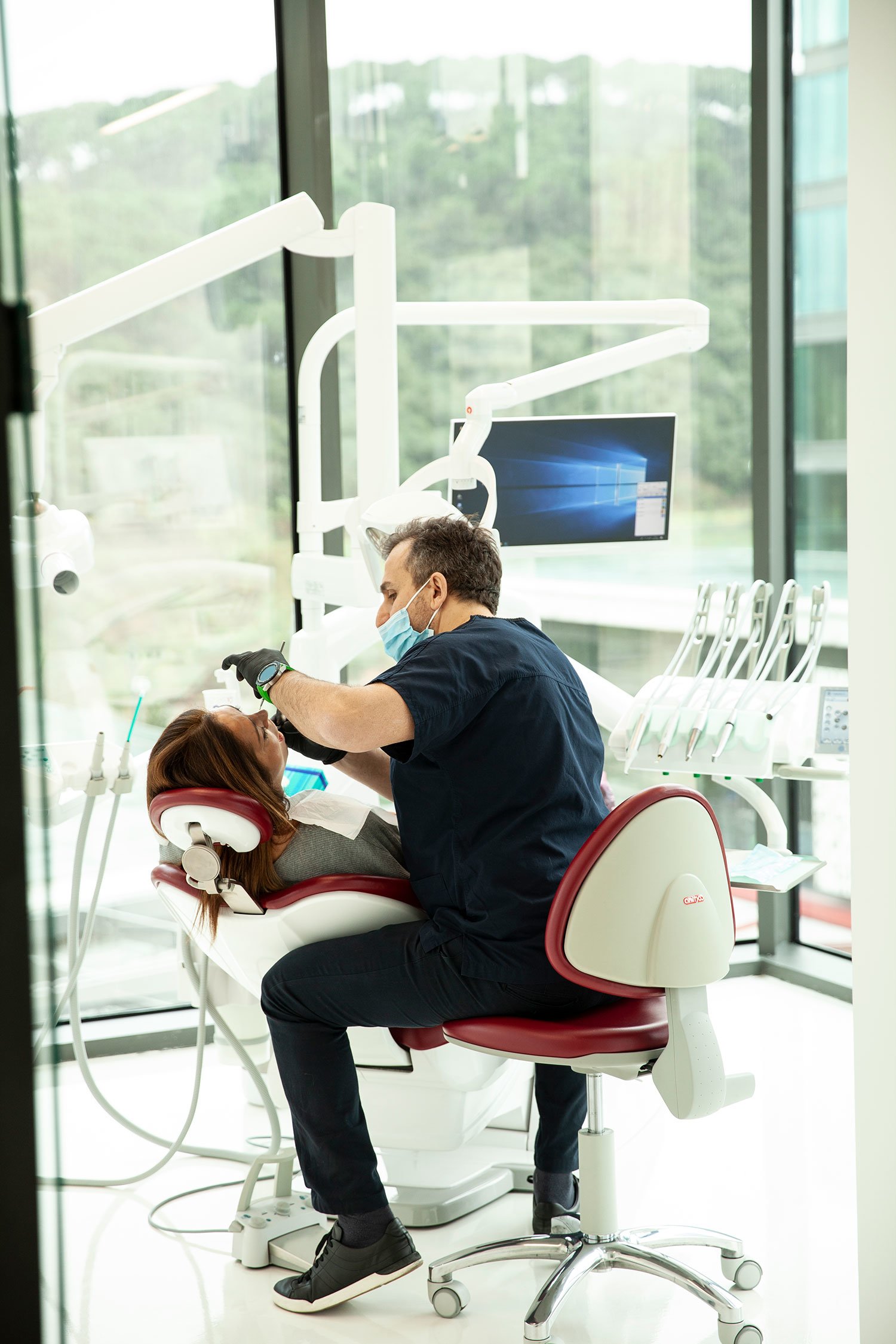
The problems related to
Aesthetic Dentistry
The word aesthetics, which we use frequently in dentistry, represents the understanding of beauty. What is the difference between aesthetic and non-aesthetic? A thinker once said, “If what you see pleases you, it is beautiful.” Beauty is not absolute and is entirely subjective.
Dental aesthetics is associated with visual perception. The color, contour, surface features, proportion, symmetry, and balance of the teeth with each other and the whole face are crucial.
- Problems such as colorization,
- fractured or damaged teeth,
- crowded or rotated teeth,
- intermittent teeth,
- part of the root surfaces becoming visible as a result of gingival recession,
- aged appearance as a result of abrasion,
- white spot lesions, and
- small lateral incisors can be listed.
Today, dentists have many treatment options that were previously lacking for restoring anterior teeth. A good diagnosis is mandatory when the patient comes with a desire for aesthetic correction. Objective identification of aesthetic problems is essential for success.
WHITENING
It can be applied in two different ways at home or in the office. Teeth whitening can be applied for moderate yellow-brown to light gray discoloration, tetracycline discoloration due to drug use, and superficial discoloration due to smoking, coffee, or tea consumption. It is a risky application in patients with tooth sensitivity, microcracks or very young teeth, and teeth with periapical diseases.
COSMETIC CONTOURING
It is the correction of natural teeth with minor abrasions. It includes trimming of cutting edges, rounding of sharp corners, and correction of small fractures and breaks.
DIRECT COMPOSITE BONDING APPLICATION
It is a kind of composite application made by removing a minimum of material from the tooth to close small gaps, to correct crooked or rotated teeth, in cases of abrasion and mild discoloration. Special composite materials are used for this purpose. It is preferred as it is highly conservative, can be completed in a single session, can be applied with minimal abrasion on the tooth, and gives aesthetically satisfactory results. However, since coloration can occur in the long term, it should be replaced after a certain period of time according to the patient’s diet and brushing habits.
PORCELAIN VENEERS (LAMINATE)
It is a porcelain application made by removing a moderate amount of material from the tooth in moderate discoloration, closing the gaps in the teeth, correcting crooked or rotated teeth, and in cases of abrasion. Abrasion is performed only on the front surfaces of the teeth and after the measurement, it is prepared in the laboratory and applied to the teeth in the second session. The most important advantage is that it has a longer aesthetic and durability compared to direct composite applications.
Our Specialties
Our customers are our priority, and we offer quality dental services with a team of experts. Learn more about our services.
Vadi İstanbul 2A Ofis Ayazağa Mah. Cendere cad. No:109/1 D:27 Sariyer

